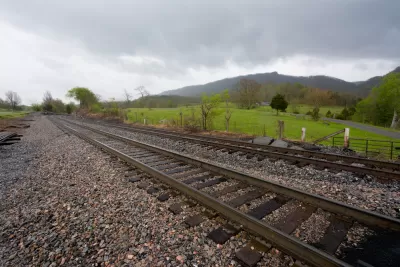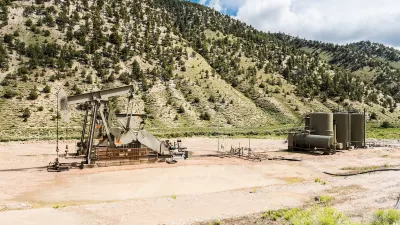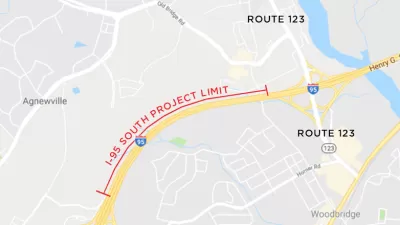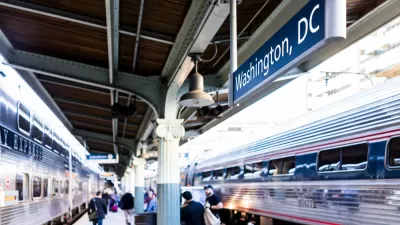A 49-mile length of railway in rural Virginia is at the start of the process of becoming a rail trail.

"Last month, Canonie Atlantic, the company which owns the tracks on the Eastern Shore [in Virginia], petitioned the federal Surface Transportation Board to decommission a 49.1 miles long rail line from the town of Hallwood to Cape Charles. If their motion is approved, that stretch of tracks would be eligible to be rail-banked — a legal process by which abandoned railways can be converted into shared-use walking, biking, and roller skating paths," reports Wyatt Gordon.
Advocates of the trail say that this project could be a huge economic boost for the region, an area which has experienced an ongoing decrease in population in past decades. Other similar projects, including 48 existing trails in Virginia, have been a draw for tourists, hikers, and cyclists, and communities along these routes have benefited from the influx of money to local economies.
"Beyond their recreational and economic value, rail trails can also serve as critical transportation connections, especially in rural areas which lack alternatives to private vehicle ownership," notes Gordon. While the Eastern Shore project has a long way to go, a Virginia Department of Transportation study has been in the works and federal approval to abandon the tracks is expected in November.
FULL STORY: On the Eastern Shore, locals hope a 49-mile rail trail will reinvigorate the economy

Study: Maui’s Plan to Convert Vacation Rentals to Long-Term Housing Could Cause Nearly $1 Billion Economic Loss
The plan would reduce visitor accommodation by 25,% resulting in 1,900 jobs lost.

North Texas Transit Leaders Tout Benefits of TOD for Growing Region
At a summit focused on transit-oriented development, policymakers discussed how North Texas’ expanded light rail system can serve as a tool for economic growth.

Using Old Oil and Gas Wells for Green Energy Storage
Penn State researchers have found that repurposing abandoned oil and gas wells for geothermal-assisted compressed-air energy storage can boost efficiency, reduce environmental risks, and support clean energy and job transitions.

From Blight to Benefit: Early Results From California’s Equitable Cleanup Program
The Equitable Community Revitalization Grant (ECRG) program is reshaping brownfield redevelopment by prioritizing projects in low-income and environmental justice communities, emphasizing equity, transparency, and community benefits.

Planting Relief: Tackling Las Vegas Heat One Tree at a Time
Nevada Plants, a Las Vegas-based nonprofit, is combating the city’s extreme urban heat by giving away trees to residents in underserved neighborhoods, promoting shade, sustainability, and community health.

How Madison’s Tree Planting Efforts Are Growing a Healthier Community
Madison’s annual tree planting initiative is enhancing environmental resilience, public health, and community livability by adding 1,400 carefully selected trees citywide, with strong community and institutional support for urban forestry.
Urban Design for Planners 1: Software Tools
This six-course series explores essential urban design concepts using open source software and equips planners with the tools they need to participate fully in the urban design process.
Planning for Universal Design
Learn the tools for implementing Universal Design in planning regulations.
Ascent Environmental
Borough of Carlisle
Institute for Housing and Urban Development Studies (IHS)
City of Grandview
Harvard GSD Executive Education
Toledo-Lucas County Plan Commissions
Salt Lake City
NYU Wagner Graduate School of Public Service





























